You can start a window cleaning business rather affordably. In many cases, the largest expenses you’ll face consist of your website development, logo design, and business document creation.
But if you have the right tools and can complete some or all of these tasks yourself, you can keep your startup costs minimal.
Once you have your business up and running, you can start building up your client base and enjoy the empowerment that comes with being a business owner.
Starting a window cleaning business doesn’t have to be difficult or expensive.
If you put extra effort into developing your own website, logo, or other essential materials, then you’ll be setting your business up for success and saving even more money.
The Easy Parts of Starting a Window Cleaning Business
When starting a window cleaning business, you’ll have a few advantages. The first is that window cleaning is an in-demand service. If you do your market research carefully, you can position your business to solve a need for many homeowners and business owners, making it easy to acquire new customers.
Technology has made setting up a website easy and affordable.
Website builders can help you create a professional website, even if you don’t have design experience. Website hosting has also become highly affordable, so you can make and launch your website for a minimal investment. If you are uncomfortable developing your own website, you can always hire a professional to take care of it for you, making it specific to your needs.
Canva can help with your website design, logo creation, and even the development of marketing materials. If you paid a professional for each of these elements, you might spend thousands of dollars. Canva makes it easy to create these yourself, saving you money and giving you complete control of each aspect. Canva even has a free account option with over 250,000 templates to get you started.
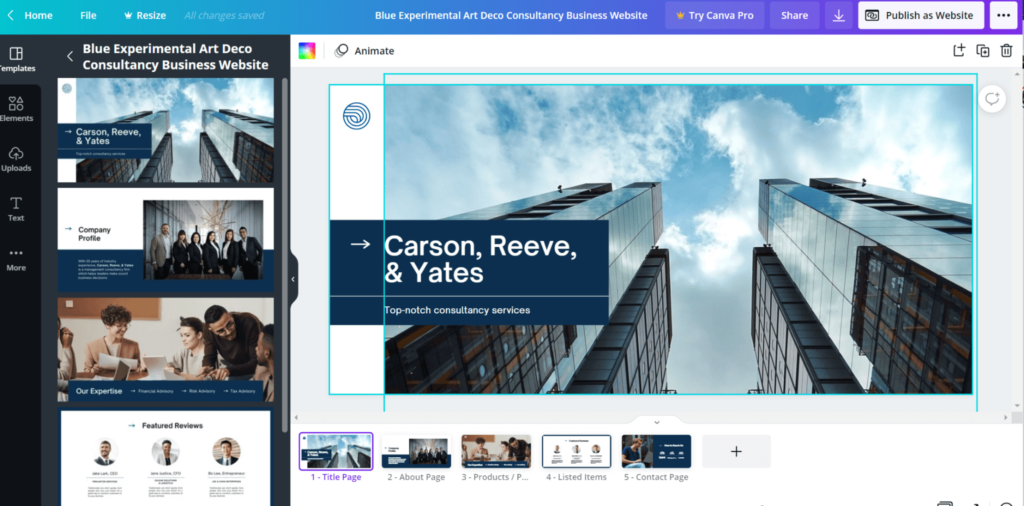
If you want to upgrade your Canva account to a paid plan, the Pro package is $12.99 per month or $119.99 billed annually. You get everything in the free plan plus tons of additional features and functionalities. If you aren’t sure about the paid plan, you can try it free for 30 days.
The Difficult Parts of Starting a Window Cleaning Business
Starting a window cleaning business is filled with challenges, too. Finding your first customers can take time, and you may not have enough customers to support you full-time for a while.
If possible, plan on starting your window cleaning business on a part-time basis, so you have other income you can depend on while you get that business up and running. Different strategies, such as creating a customer loyalty reward program or customer referral program, can also help you build up your customer base faster.
Other challenges you may face include setting competitive pricing, doing a lot of in-depth market research, hiring employees, and doing administrative work like bookkeeping and invoicing.
Many of these things can be outsourced, automated, or just take time to learn. The challenges here are not insurmountable at all. They just take your time and effort.
Step 1: Develop a Business Plan
It’s so important to take the time to create a business plan. Think of your business plan as being the roadmap for your business. It includes details about everything from your target audience to how you’ll market your business and plans for how your business will become successful.
Creating a business plan requires lots of hard thinking, but addressing the challenges you’ll face early on can help ensure that you have a solid plan that will work. You can find many business plan templates available online to guide you through the process.
The main thing to remember is to be brutally honest about your skills, timelines, and financial plans for the business when developing your plan.
Do Market Research and Define Your Audience
Start your business plan by doing market research into the need for window cleaning in your area. If possible, poll business owners or homeowners about their window cleaning process, whether they use a professional, and how much they would be willing to pay for the service.
It’s also essential to research your local competitors. Review their pricing and the services they offer. See if you can determine a niche or a service that’s currently unmet in the area or another way to differentiate your business. Reading a competitor’s customer reviews can help you identify any shortcomings, and those might be opportunities you could use to stand out or fill a need and attract new customers.
Determine Your Services and Pricing
Your market research will help to inform what services are most in demand in the area. You’ll need to think carefully about the types of services you’re comfortable and qualified to offer. For example, high-rise window washing requires significant experience, knowledge, skill, and specialized equipment. Your equipment and expertise may also define the services that you provide.
Once you’ve outlined your services, you’ll need to determine your pricing structure. You’ll want to choose reasonable prices for the location, and you should already have some information about this from your market research.
To determine your prices, calculate the cost of your supplies and the overall cost of operating your business. While it’s important to develop an appropriate initial pricing structure, it’s also wise to reevaluate your prices in six months and adjust them if needed. As you gain more clients and experience, it is reasonable to raise your prices.
Define Your Unique Sales Proposition
Your unique sales proposition (USP) is what differentiates your business from others. Maybe you want to be known for your superior customer service, or perhaps you use only eco-friendly cleaning products and want to be the local environmentally conscious window cleaner.
This unique sales proposition will be key to your marketing, so take the time to make sure that this message is clear, unique, and memorable.
Brainstorm and Decide on a Business Name
Any great business needs an equally great name. Your name will need to be original and easy to remember. More importantly, your name should be significantly different from the names of other local window cleaners.
To come up with a name, start brainstorming all sorts of potential names. Write all of those ideas down. Even if you don’t think you’ll use a particular name, it might lead to an idea for another, better one. Get your friends and family in on the process to help generate more ideas. You can also try a free business name generator to get more inspiration and ideas. BusinessNameGenerator.com has a good one, and it will also show you if a matching domain name is available.
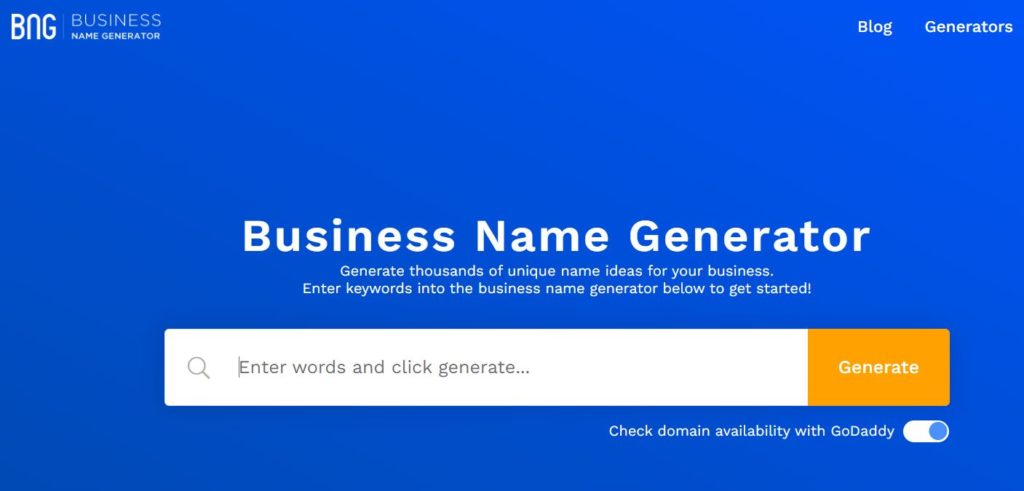
Once you have a list of possibilities, start narrowing down the list to your favorites. With four or five top names selected, research to ensure that they aren’t trademarked, aren’t the name of other local businesses, and their domains are available. From there, you can choose your favorite and officially name your business.
Step 2: Take Care of Business Paperwork
To operate your business legally, you’ll need to complete some paperwork, including business licenses and tax documents. Some of this paperwork can take time to process, so start your paperwork early on so that you don’t have to delay opening your business.
Apply for an EIN
You’ll need to apply for a Federal Employer Identification Number, or EIN, for your business. This EIN works similarly to a Social Security Number, and it helps track income and appropriate taxes.
When you have an EIN, you can avoid having to use your personal SSN for business purposes. This makes for a safer, more secure option that prevents your personal information from circulating with all of your business contracts. Some business checking accounts also require an EIN. You’ll also need an EIN to open a business bank account.
Get a Business License
You’ll need a license to operate your window cleaning business. The specific licensing requirements will vary depending on the town and state where you live. Fees can vary, too.
To get the most accurate information, call or visit your town clerk. Research to find out if your county or state requires a business license, and make sure you follow all the steps to get one if it does.
Get Insured
You’ll need several types of insurance for your business. In addition to general business liability insurance, you’ll also need business insurance for your vehicle.
Insurance plans and premiums can vary, so contact multiple insurance companies for quotes. When you compare those quotes, consider how the premiums differ and how the coverage, exclusions, and deductibles compare.
Develop Contracts and Documents
This is also the time to create the contracts and documents you’ll need to run your business. These specific documents will vary depending on your business needs, but plan to have at least a service agreement and an invoice document prepared.
Canva can help you to develop professional-looking documents. Canva offers a wide selection of invoice templates, and many of them are free to use. You can choose a template and then customize it with your business branding. This can save you time and money over the cost of hiring a designer to prepare these documents.
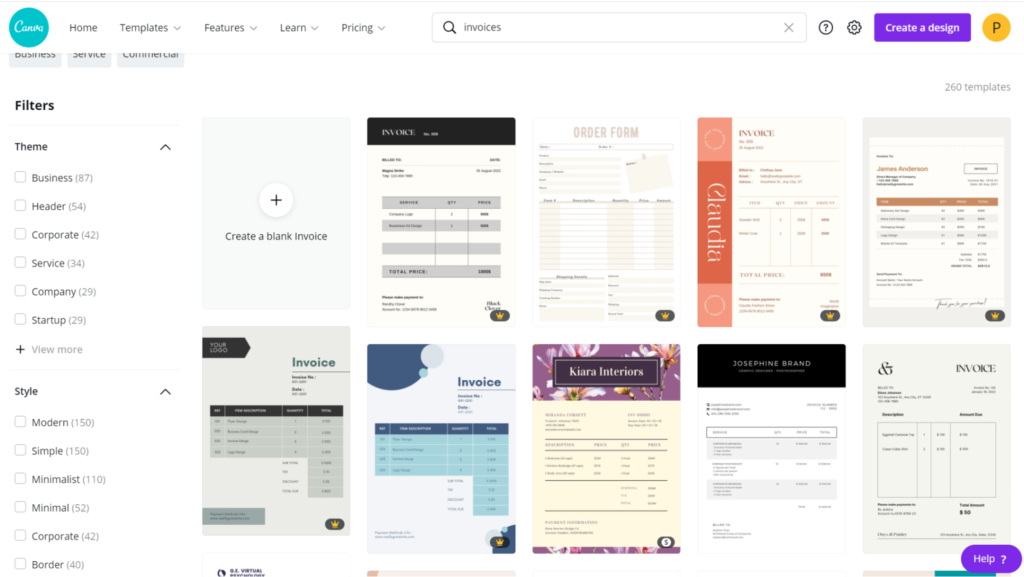
Step 3: Develop Your Marketing Materials
To find new customers and promote your business, you’ll need quality marketing materials. From designing a log to creating your website, it’s essential to develop professional marketing and branding that represents your business well.
Start with a Logo
Your logo will be on all of your branded materials, so start by developing a quality logo. You’ll need to think about your branding colors, text, and overall design.
While some business owners hire a logo designer, this can get expensive and be time-consuming. Canva offers a great selection of logo templates that you can fully customize to design your own logo. Alternatively, you can use Canva to design your logo from scratch.
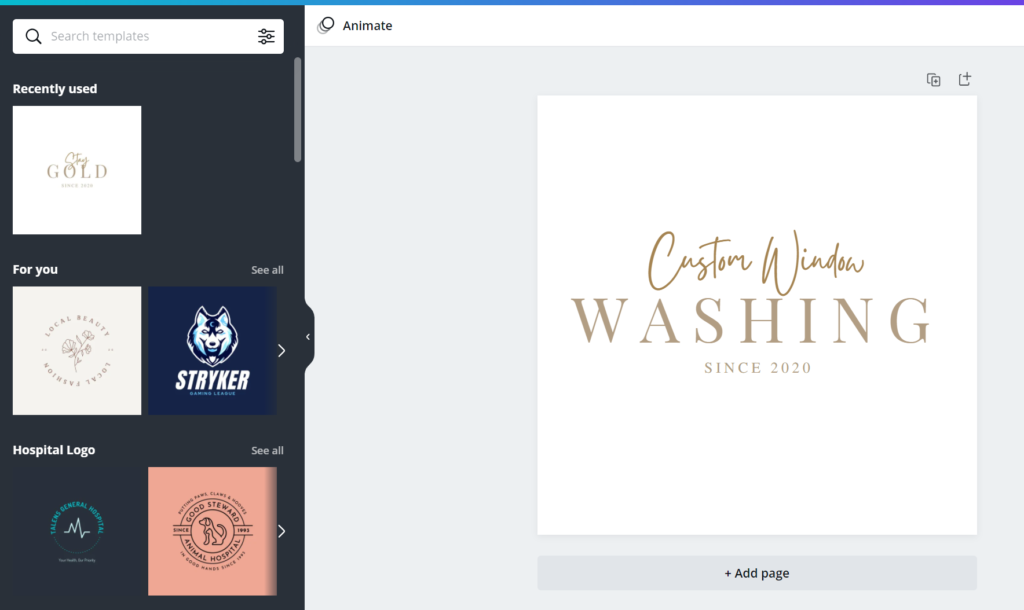
Once you are happy with your logo, you can download it and add it to your website, vehicle signage, uniforms, business cards, and more.
Create Your Website
You’ll also need to create a website. Canva can help with this, too. Canva has website creation templates that look very professional. You just need to edit the text, font, colors, and photos to completely customize the design and create a site of your own. If you already have a host or domain through a website builder like Wix or WordPress, you may want to use the built-in templates on those platforms instead.
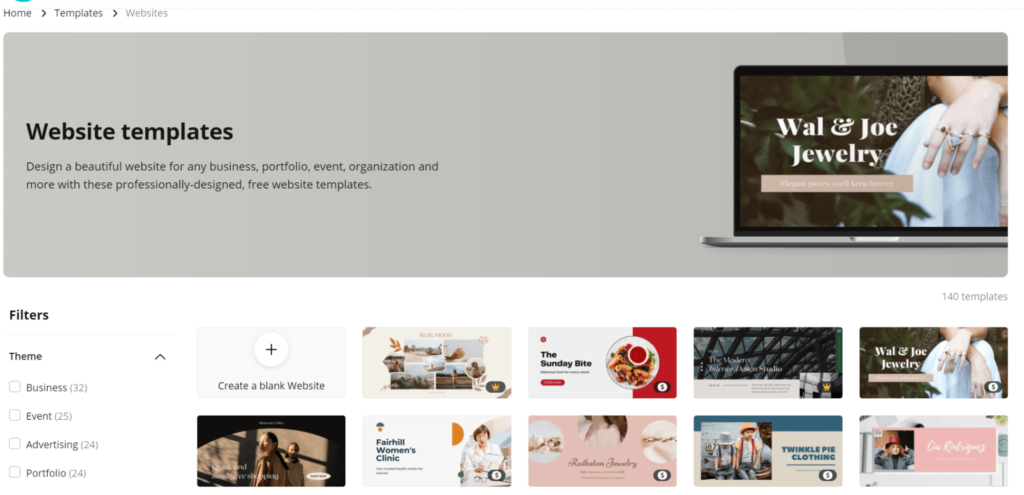
Pairing Canva with the many lower-cost website hosting and building programs available can help you create a website for a minimal investment. While many business sites can cost thousands of dollars to create, Canva lets you handle the design work easily and quickly. Even if you don’t have design skills, using a template to guide you can help ensure that your site still looks great.
Create Additional Marketing Materials
With your logo established, you can easily put it on additional marketing materials. You might choose to create business cards, brochures, flyers, posters, and more. Canva has templates for all of these.
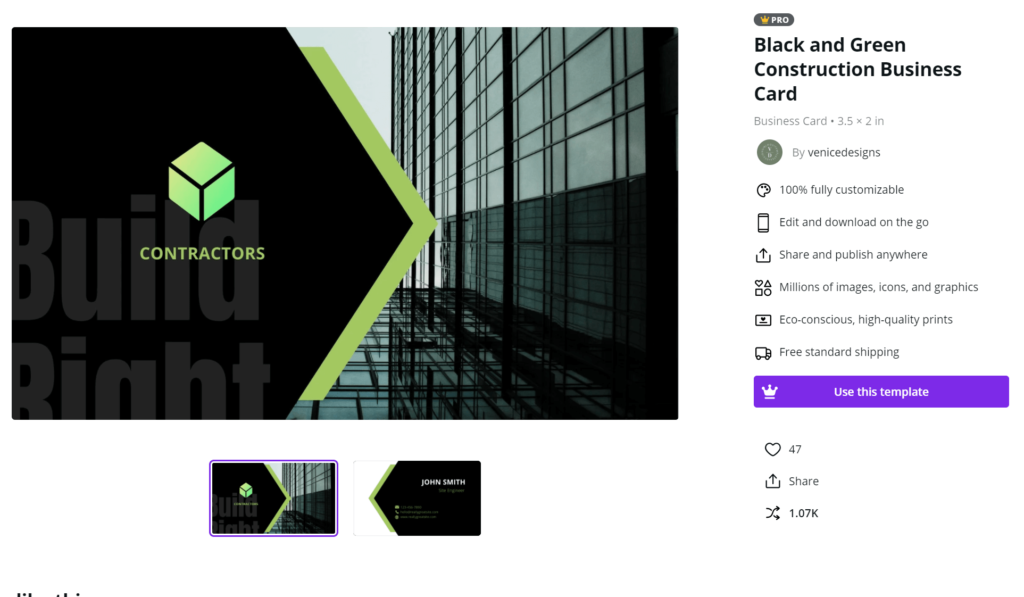
When you have these marketing materials prepared, you’ll be able to represent your business professionally. Quality marketing materials can be vital to getting your first customers and starting to build your business.
Step 4: Purchase Your Supplies
While you can save money by designing your logo and marketing materials yourself, you will need to put some money into your initial supply and equipment purchases. If you shop around and compare prices, though, you can help to keep your startup costs down.
Find the Right Vehicle
If you don’t already have a truck or a van, you’ll really need to buy one for your business. Look for used or leased vehicles available at a lower cost. Your insurance payments will be less for these vehicles, and you can always upgrade to a newer vehicle once your business is established and profitable.
Be sure that any vehicle you choose has the storage capacity to hold your larger equipment, like ladders. Look for a vehicle with a structure that lets you quickly load and unload these ladders, like a truck with a rack system that’s easily accessible.
Invest in Your Equipment
You’ll also need to buy equipment, like hoses, sprayers, ladders, buckets, and chemicals. You may find some of these products available for sale used, which can help keep your initial costs down.
It’s important to research your cleaning chemical purchase carefully. Look for a solution that performs well while also being relatively safe. It’s crucial to review any local restrictions and requirements ahead of time to verify that you’ll be able to use the chemical you purchase. This is particularly important if you’ll be cleaning buildings located near a body of water.
Also, don’t forget to set aside plenty of money to invest in safety equipment, like goggles, gloves, coveralls, and harnesses. Buy your safety equipment new and be prepared to regularly replace it as it ages.
Buy Uniforms
Uniforms can help you make a professional first impression, and they show that you take your business seriously. Consider buying polo shirts or coveralls with your logo embroidered on them. If you decide to hire staff, this uniform is easy and affordable to replicate, and it makes for a cohesive, polished look, which is what any customer would look for in a window cleaning company.
What To Do Next
Now that you have everything you need, it is time to start marketing your business and getting your first customers! Remember to have all new clients sign your service agreement before starting work.
As your business grows, you may find that you need to hire employees to start taking jobs. Don’t forget to do background checks and check references to hire trustworthy, reliable employees.
from Quick Sprout https://ift.tt/3CIg3JL
via IFTTT
